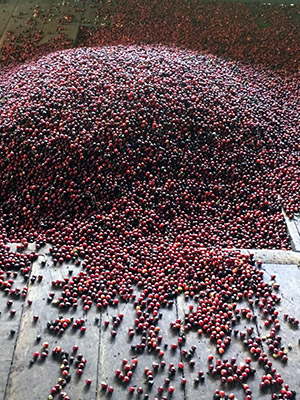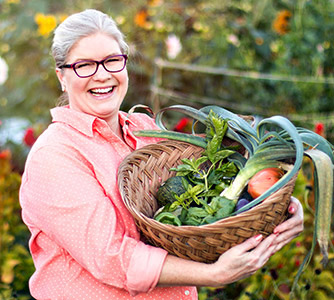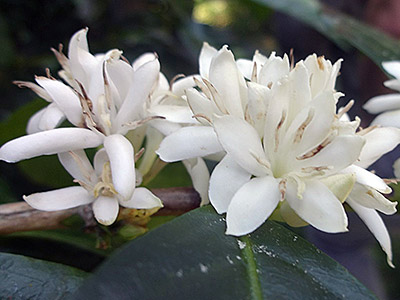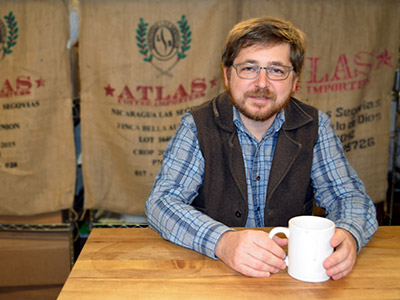
In the United States, about 150 million people drink an average of three cups of coffee every day. A new course at the University of Washington School of Public Health challenges students to think about where that coffee comes from and how the world commodity moves from bean to brew.
“We’re exposing students to a single ingredient, coffee, so they can better understand it as consumers and connoisseurs,” said Anne-Marie Gloster, a lecturer in the School’s Department of Epidemiology and Nutritional Sciences Program. “By examining coffee from cultivation, processing and through to brewing, we’re creating a stronger awareness of the food system and the people that bring us this one beverage.”
Throughout the course, called Coffee: From Cultivation to Cupping, which began Sept. 28, students use coffee as “a lens to look at global health, international development, the economy and the environment, as well as social justice issues such as fair pay and gender inequality,” Gloster says. “We’re also covering the nutritional and health benefits of coffee.”

More than 200 students are enrolled in the one-credit class; most are juniors or seniors majoring in everything from accounting and engineering to art and biochemistry. Public health students make up the largest group, Gloster notes. Many are nutrition minors.
“It’s been so much fun,” says Lisa Sochor, a senior psychology major and nutrition minor. “This class made me think even deeper about the environmental and social impact of my coffee consumption. I’ve loved the various perspectives presented—from coffee farmers to coffee brewers.”
Students hear from voices in the field, including producers in Nicaragua, processors in Seattle and public health professionals in Kenya. Michael Chung, an associate professor of global health, joined the class virtually from Nairobi to talk about the health status and health care access of coffee workers.

“Many coffee farmers from around the world live in resource-limited settings under challenging health conditions,” says Chung, who provides cervical cancer screening to female coffee growers. (Read the full story.) “It’s helpful for us to learn more about where the food we value so much comes from and how we can help those who help us stay awake every day.”
Coffee is the primary source of antioxidants in the American diet, Gloster notes. “It’s on the good list this year and students should understand the implications of ingesting caffeine as a chemical substance,” she says.
The “good list” is the latest dietary guidelines released by the U.S. Department of Agriculture and the Department of Health and Human Services, which mention coffee for the first time and advise that "moderate coffee consumption" can be part of a healthy diet.
Gloster moved to Seattle a year ago to help bolster the School’s interdisciplinary nutrition program. She teaches the first cooking course at the UW since home economics was removed from the curriculum 30 years ago.

Gloster teaches the course alongside Joseph Maurey, a master roaster and manager for UW’s Husky Grind, a campus coffee chain.
“I’m hoping that students will think about our relationship with food and how it might have an impact on the world around us,” Maurey says. “I’d like them to see that they can use an industry, like the coffee business, as a way to access people and develop creative solutions to community health problems.”
Maurey, who has worked at the UW for a decade, studied music composition in college and played in a steel pan orchestra called the Rhythm Riders. His professional shift towards coffee was “completely accidental,” he says. “My passion for coffee was never about the caffeine. It’s the fact that something that seems so simple—a cup of coffee—actually has a lot of interesting stories behind it.”

Maurey brings these stories to the classroom. He presents compelling case studies from Yemen, Myanmar, Nicaragua, Honduras, Costa Rica and more. Students learn about the environmental factors that affect coffee growth in these regions and identify challenges faced by farmers.
It’s no surprise that Gloster and Maurey designed the curriculum to include coffee tastings. The goal is for students to describe the impact of roasting as it relates to color and flavor, summarize the sensory attributes of what they’re drinking and enjoy specialty Arabica brews.
“I love coffee,” Sochor, the senior, says. “I always look forward to my next sip of coffee, so it’s safe to say that the tastings were the most incentivizing part of the class."

Her “a ha!” moment came during a discussion of the changing role of women on coffee farms. “I had a moment of sparked interest when learning about women’s empowerment,” she says. “Equality produced better coffee quality and better economic success. When gender equality is promoted, everyone benefits.”
The course is made possible through a collaboration with the UW Housing and Dining Services.
“We exist for the students and our role is to nurture them and to provide co-curricular learning opportunities in our work,” says UW Dining Director Gary Goldberg, who is also a clinical instructor in health services. “We were able to bring this mission to the classroom to build a relatively unique partnership and one we hope to continue with other potential subjects beyond coffee.”
(By Ashlie Chandler)
